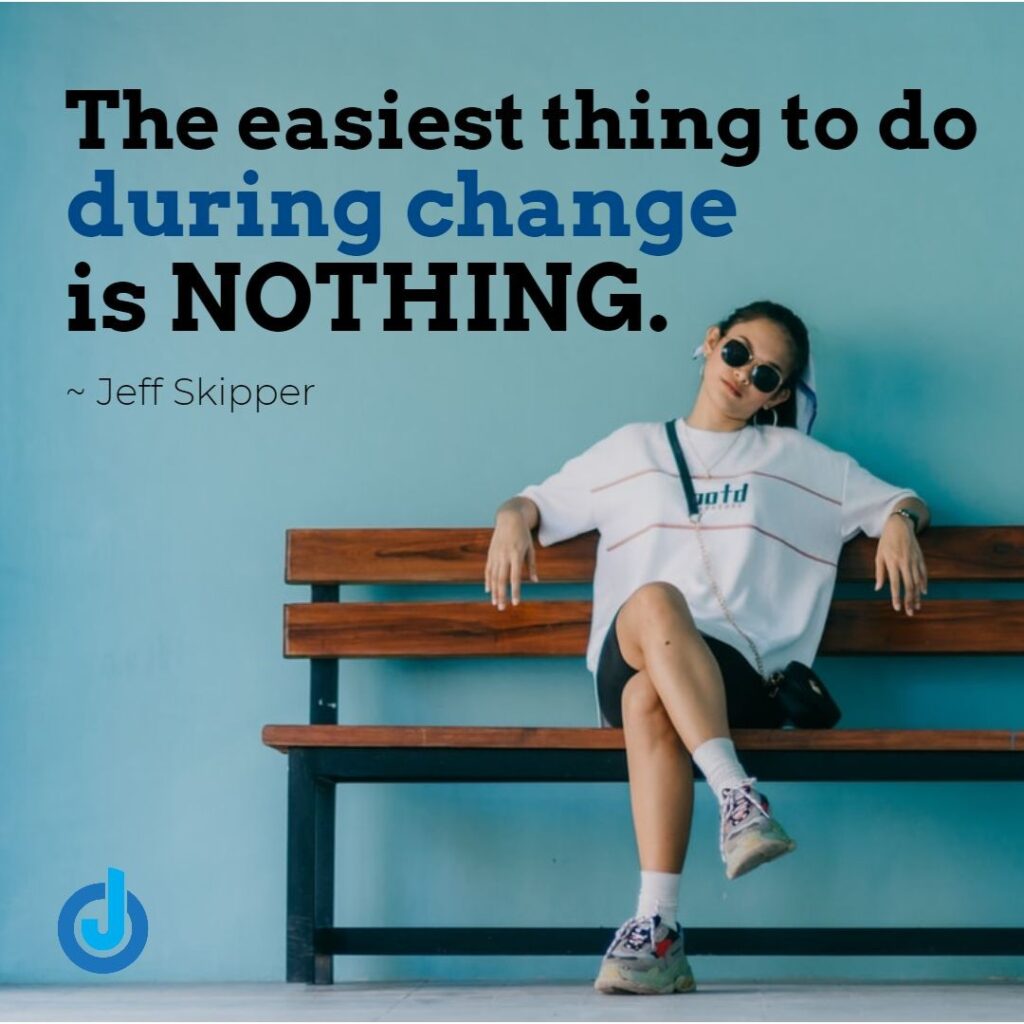“So, we’re going to be switching the Classix system over to Nuvo!”
“What? Why?”
“Classix is out-dated. No one uses it anymore. I’ve seen Nuvo and it is really slick. Plus it gives us a bunch of new features we could really use to serve our customers.”
“Ridiculous. Classix works just fine. No one is complaining.”
“Not true. The noobs hate it. Say we’re working in medieval times. They would rather submit tickets right from their phone, on the run. We can’t do that with Classix.”
“Spoiled brats. They don’t know what they don’t know.”
“Maybe they don’t need to know…”
“I’m just going to keep doing the same thing until you pry my dead fingers off the keyboard.”
“Huh. It might come to that. The execs are saying it’s the future.”
“They’re not here.”
“They might show up, if we don’t get in line.”
Even with the best-managed changes connected to the most beneficial outcomes, there will be those that don’t want to get on board.

During a period of change, our goal is to help the organization generate a return of some sort. A return on investment, on relationships, or on reputation. Because change requires the participation of humans, adoption is a requirement to generate those returns.
Adoption is the point at which those aforementioned humans embrace a change, even if begrudgingly; The point at which we exchange one tool or procedure for another, or switch one point-of-view to the next.
A colleague asked, “Who is accountable for adoption?”
My peers gave the expected responses: leaders, managers, sponsors.
I disagree.
Adoption is a choice that every individual must make. We cannot make it for them (unless you’re still into the coercion thing). We, as leaders, set the stage for adoption by:
- Describing the change in detail (What, where, who, how)
- Providing a reason (Why, WIIFM, Help, Heart, Hope)
- Building capacity (resilience-building, skill development)
- Reinforcing success (coaching, recognition)
We do everything possible to maximize the probably that people will adopt. But not everyone will. That’s where accountability lies with leaders, managers, and sponsors. We are accountable for performance! No adoption, no performance, and no returns.
When adoption is an issue, leaders have three choices:
1. Continue encouraging compliance.
2. Allow workarounds or defiance.
3. Help the individual find a more appropriate line of work…elsewhere.
If someone needs extra help to get on board, I’m all for doing whatever we can. But when someone digs their heels in repeatedly, it’s time for them to go. When we allow disobedience, we are defacto endorsing it. I coach leaders to help people exit quickly when there are systemic performance issues, before one person poisons the workplace.
So let’s be clear…
Individuals are accountable for adoption.
Leaders are accountable for performance.



